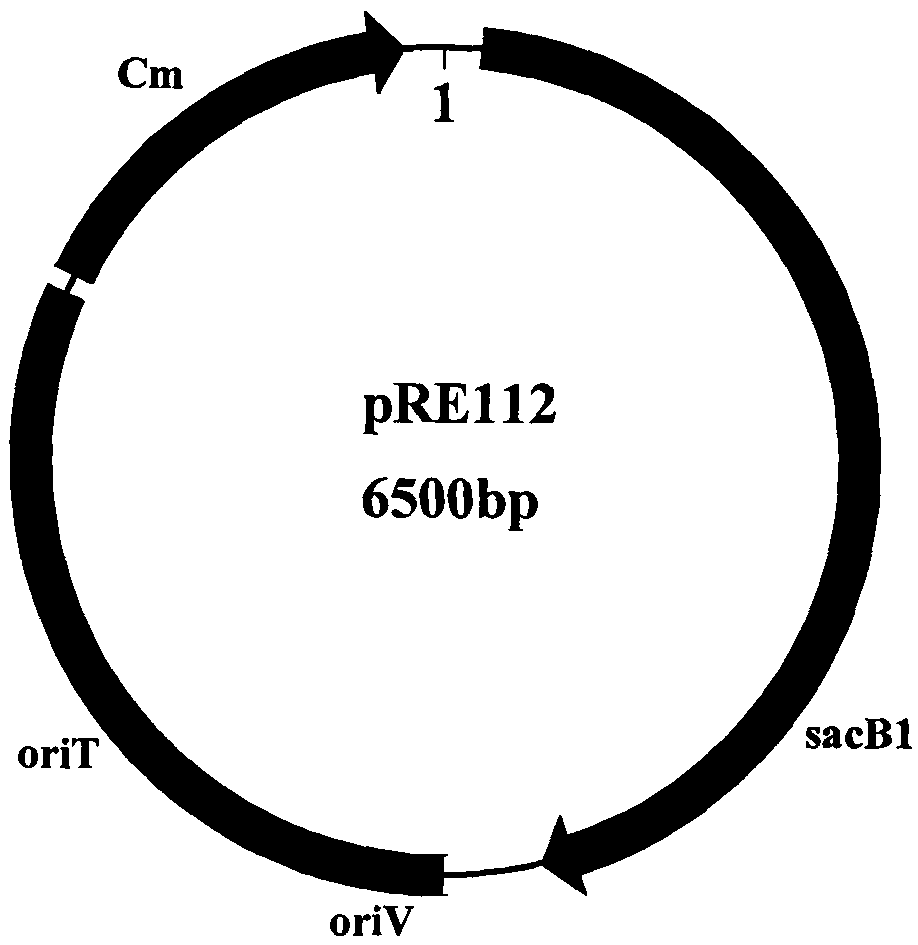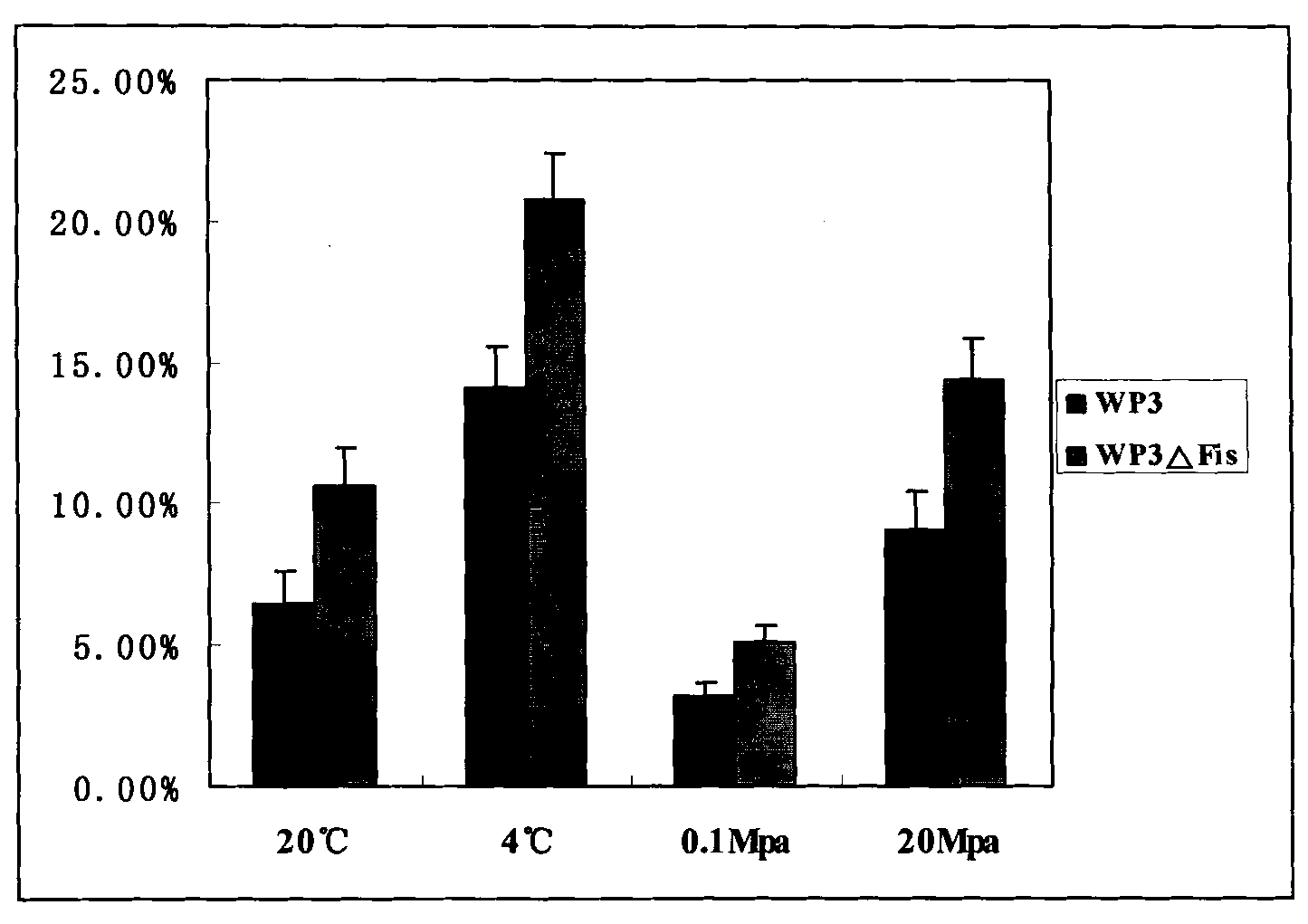Shewanella piezotolerans genetic engineering bacteria for producing eicosapentaenoic acid (EPA) in high yield
A technology of eicosapentaenoic acid and genetically engineered bacteria, which can be used in genetic engineering, plant genetic improvement, bacteria, etc., and can solve problems such as ignorance of EPA regulation
- Summary
- Abstract
- Description
- Claims
- Application Information
AI Technical Summary
Problems solved by technology
Method used
Image
Examples
Embodiment 1
[0017] Embodiment 1: Deletion of the Fis gene (ORF4) in the gene cluster and obtaining genetically engineered bacteria
[0018] First, the DNA containing the EPA gene was extracted from the wild Shewanella piezotolerans WP3 strain, and then the DNA fragment (SEQ ID NO 1) with the deletion of the target gene was obtained by two rounds of PCR amplification, which was cloned into the suicide vector pRE112 to obtain the Fis deletion mutant vector pRE112-Fis. The pRE112-Fis was introduced into the diaminopimelic acid (DAP) auxotrophic Escherichia coli WM3064 by chemical transformation method, and then the plasmid pRE112-Fis was introduced from the donor strain WM3064 into WP3 by the method of combined transfer, and then passed two rounds Orfswp3548-deleted genetically engineered strain WP3 was obtained by DNA homologous recombination screening ΔFis .
[0019] details as follows:
[0020] 1. Materials:
[0021] 1. Suicide vector: pRE112, see its structure figure 1 , figure 1 m...
Embodiment 3
[0042] The method that embodiment 3WP3 cultivates and EPA detects:
[0043] 1. Bacterial culture under different conditions:
[0044] 2216E Medium (1000ml)
[0045] Yeast extract 1g
[0046] Tryptone 2g
[0047] NaCl 34g
[0048] Fe 3 PO 4 0.1g
[0049] (1) Cultivation of WP3 under different temperature growth conditions: after overnight culture in normal 2216E medium (salinity 3.4%), the bacterial liquid was diluted 50 times into fresh medium, and placed in low temperature (4°C) and Cultivate at room temperature (20°C).
[0050] (2) Cultivation of WP3 under high-pressure conditions: carried out with a simple pressure simulation system. After the bacteria liquid cultured overnight was grown to the mid-logarithmic growth phase in normal medium (salinity 3.4%), the bacteria liquid was diluted 100 times and then filled into a Pasteur tube to drive away the air bubbles and seal it, put it into a pressure valve, adjust to 20MP for 2 days. Another part of the...
PUM
 Login to View More
Login to View More Abstract
Description
Claims
Application Information
 Login to View More
Login to View More - R&D
- Intellectual Property
- Life Sciences
- Materials
- Tech Scout
- Unparalleled Data Quality
- Higher Quality Content
- 60% Fewer Hallucinations
Browse by: Latest US Patents, China's latest patents, Technical Efficacy Thesaurus, Application Domain, Technology Topic, Popular Technical Reports.
© 2025 PatSnap. All rights reserved.Legal|Privacy policy|Modern Slavery Act Transparency Statement|Sitemap|About US| Contact US: help@patsnap.com



